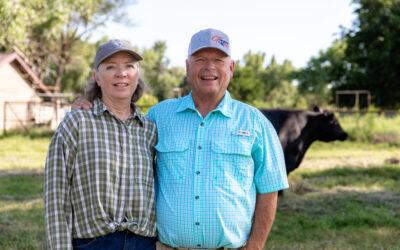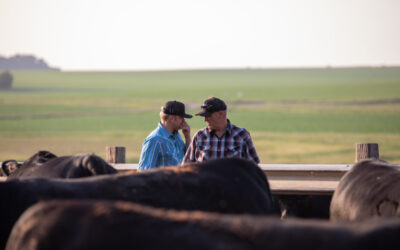
Better than expected
Well actually my cows are grass seekers but they have had to settle.

Creep feeding is part of preconditioning this year. To get our surviving 75 calves started on the path to independence, we put out 5 tons of creep in early July and it was gone in 5 weeks. That was about 3.8 pounds per day on the ration of 1/3 each oats, corn gluten pellets and cottonseed hulls. Putting out another half-batch to get us into the Sept. 8 weekend weaning date.

Cracks in the ground not getting wider because they are filling in with dust! It will be interesting to see what is merely dormant and can come back to life next spring. Cows are on prairie hay with occasional alfalfa or range cube treats. They come a runnin every time now, but seem disappointed when it’s only prairie.
Preweaning shots and individual weights this past weekend, starting one after-hours weekday that ran short of daylight by the time we returned calves to their mammas.

A lot of dust all over, but cooler weather helps. Thirty top AI-sired heifer prospects looking good.
Except for a few lingering cases of pinkeye from the incessant dust, calf health seemed good and weights were amazing under these conditions. This was two weeks earlier than last year, when 14 of 90 calves weighed more than 600 lb. We still had 9 of 75 in that category and 14 more that could be there in two weeks if they belly up to the creep feeder! It is heartening to see that a promising first-calf heifer from last year, 132, only managed a 325-lb. heifer then but came through with 525-lb. this time around. Old 85 will wean her last AI heifer this fall, but she looks like a good one, too.
It’s been a tough summer, and even a nice rain now can’t help this year’s forage. But it can sure make us feel better about next year.
Till next time, let’s keep targeting the brand and building tomorrow together,
–Steve
You may also like
Helping Hands, Helping Herds
“When I die, I want to come back as one of your cows,” murmurs a friend to Steve Zybach. Full to the brim from an alfalfa ration every day, bountiful fields of lovegrass stretched out across the Texas Panhandle—and owners who leave no ounce of cattle care up for question. The Zybachs’ motivation for this level of dedication to their Angus cattle is simply love.
System Over Scale
For Dallas Knobloch, it’s not about being the biggest feedyard—it’s about building a high-quality system that works. Today, with Tory’s wife Sadie and daughter Ivy, the Knobloch family owns and operates 4K Cattle. They feed 2,500 cattle at eight locations within 10 miles of home, manage 1,000 acres of crops and run a 125-head cow herd, all near Hills, Minn.
Data-Driven Progress and Partnerships
Discussions at Feeding Quality Forum reaffirmed the industry’s commitment to quality, transparency and innovation. With record Prime rates and strong consumer demand, producers who invest in genetics, health and relationships are positioned to drive progress and capture premiums.




